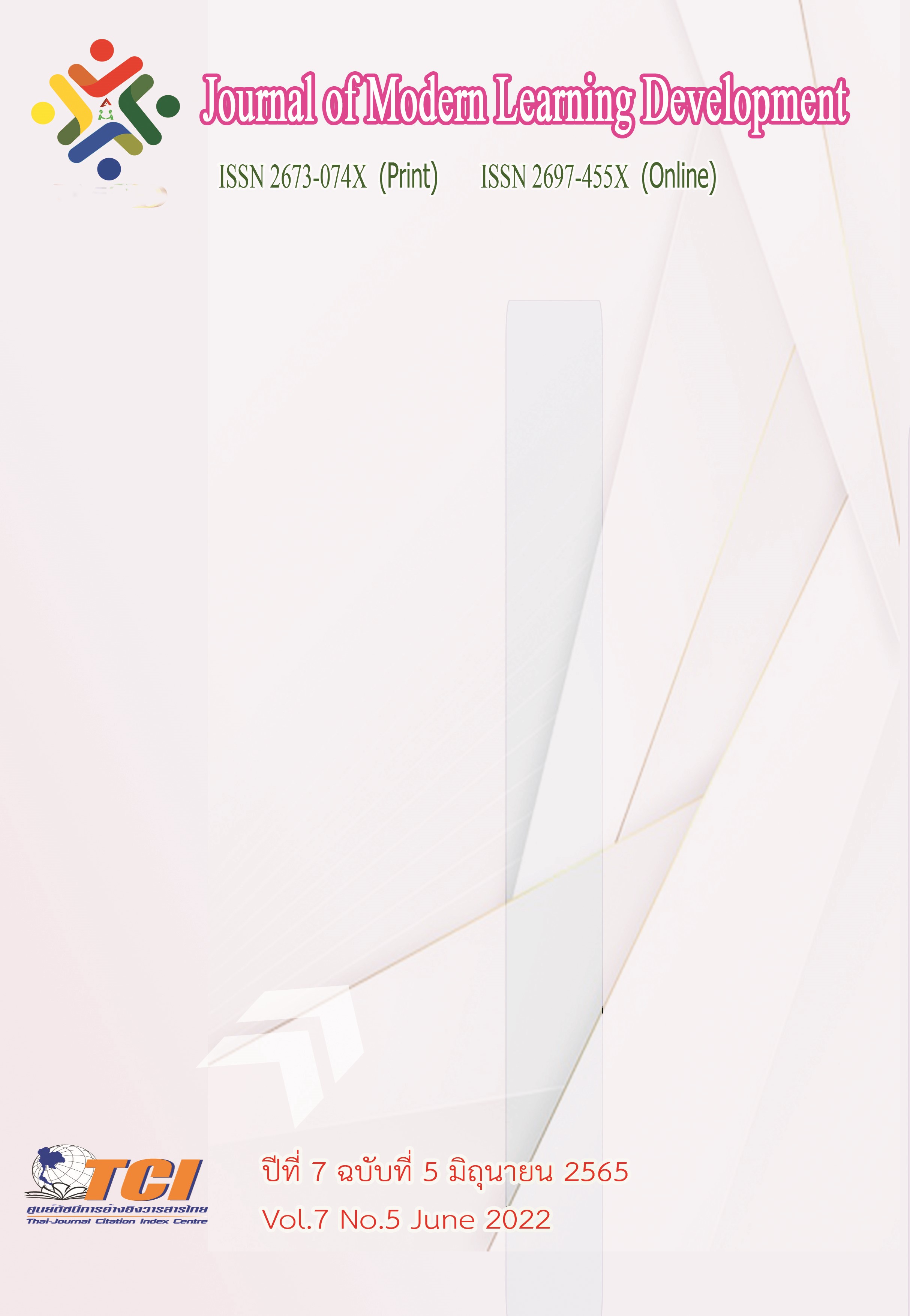Achieving Low Carbon Growth in Cities through Sustainable Urban System Management: Case Study of Waste Management Khon Kaen Municipality
Main Article Content
Abstract
This research had the objective to investigate the question of whether the City of KhonKaen has achieved low carbon growth through a sustainable urban management system. This study identified factors affecting success or failurein achieving low carbon growth. This research is a documentary research of waste management, and the factors behind a successful waste management system. The author conducted a review of the related literature. This study had the following findings.
The waste sorting promotion project to reduce the amount of waste in KhonKaen City has 32 waste sorting networks with a total capacity of 3,303 tons of organic waste. The amount of greenhouse gas emissions is calculated at 1,739 tons of carbon-dioxide-equivalent. There is a learning center on organic waste management which applies sufficiency economy principles as a model community of how a low-carbon family operates. There is an Environmental Conservation Curriculum Project and a project to convert solid waste into electric power. The Khon Kaen Municipality has entered into a memorandum of understanding with private companies to convert solid waste into electricity on the condition that all investors are private. As a result, operations are carried out at both upstream, midstream, and downstream. The system is able to reduce greenhouse gas emissions by 98,413.46 tons of carbon-dioxide-equivalent. That quantity is close to the target that Khon Kaen has set of100,500 tons of carbon-dioxide-equivalent. It was found that the key condition for the development of a low-carbon city is cooperation between government agencies, the private sector, Civil Society, educational institutions, and other sectors in the area. It is also very important that the local administrative organization(s) is a key player and that there is a clear roadmap for implementing the system.
Article Details
References
ฉัตรชนก โตวัฒนกูร และ ธีริน วาณิชเสน. (2559). ศึกษาความสัมพันธ์ระหว่างวัฒนธรรมองค์กรและแรงจูงใจในการบริการสาธารณะเพื่อพัฒนาการมีส่วนร่วมของสมาชิกในองค์กรไม่แสวงหากำไร กรณีศึกษา: สโมสรโรตารี (ประเทศไทย). วารสารศิลปากรศึกษาศาสตร์วิจัย. 8 (1), 344 – 361.
ชูสิทธิ์ ชูชาติ และคณะ. (2544). รูปแบบการท่องเที่ยวเชิงนิเวศในเขตลุ่มมน้ำแม่วาง. (รายงานวิจัย). เชียงใหม่: คณะมนษยศาสตร์และสังคมศาสตร์สถาบันราชภัฏเชียงใหม่.
ชลลดา แสงมณีศิริสาธิตกิจ. (2557). การพัฒนารูปแบบการท่องเที่ยวตลาดน้ำภาคใต้เพื่อการพัฒนาที่ยั่งยืน. วารสารศิลปากรศึกษาศาสตร์วิจัย. 6 (1), 66 – 79.
นิคมศม อักษรประดิษฐ์. (2558). กระบวนการบริหารจัดการการท่องเที่ยวแบบคาร์บอนต่ำ (Low Carbon Tourism) กรณีศึกษาพื้นที่เกาะหมาก จังหวัดตราด. วิทยานิพนธ์ปริญญาศึกษาศาสตรมหาบัณฑิต สาขาวิชาพัฒนศึกษา ภาควิชาพื้นฐานทางการศึกษา. บัณฑิตวิทยาลัย: มหาวิทยาลัยศิลปากร.
นรชิต จิรสัทธรรม และ กานต์พิชชา แกล้วกล้า. (2561). รีไซเคิลขยะสร้างมูลค่ามากกว่าเผาเพื่อผลิตไฟฟ้า. ออนไลน์.สืบค้นเมื่อ 21 เมษายน 2564. แหล่งที่ม่า: https://theisaanrecord.co/2018/04/19/ waste-electrical-power-plant/.
เทศบาลนครขอนแก่น. (2555). ระบบรายงานข้อมูลก๊าซเรือนกระจกขององค์กรปกครองส่วนท้องถิ่นและเมือง รายงานคาร์บอนฟุตพริ้นท์ เทศบาลนครขอนแก่น อำเภอเมือง จังหวัดขอนแก่น. ออนไลน์. สืบค้นเมื่อ 30 กันยายน 2555. แหล่งที่มา: http://lowcarboncity.tgo.or.th/database/report /2555/136
ศุภวัฒนากร วงศ์ธนวสุ และคณะ. (2562). ขอนแก่นโมเดล: The Khon Kean Model. ขอนแก่น: วิทยาลัยการปกครองท้องถิ่น.
สุนิษา มีนรินทร์. (2557). การพัฒนาเมืองสู่สังคมคาร์บอนต่ำด้วยการบูรณาการแผนด้านการใช้ประโยชน์ที่ดินและการคมนาคมขนส่ง. วิทยานิพนธ์ปริญญาการผังเมืองมหาบัณฑิต สาขาวิชาการผังเมือง. บัณฑิตวิทยาลัย: มหาวิทยาลัยธรรมศาสตร์
สำนักข่าว MThai. (2557). ตะลึง!ขอนแก่น ขยะตกค้างกว่า 8 แสนตัน. ออนไลน์. สืบค้นเมื่อ 30 กันยายน 2564. แหล่งที่มา: https://news.mthai.com/ general-news/394823.html.
อมรเทพฤทธิ์ อินทร์แย้ม, วัชรินทร์ อินทพรหม และ พัลยมน สินหนัง. (2563). วารสารวิชาการ มหาวิทยาลัยราชภัฏพระนคร. 11 (2), 363 – 380.
อีอาร์เอ็ม-สยาม. (2562). รายงานฉบับสมบูรณ์ ข้อมูลปริมาณก๊าซเรือนกระจกระดับเมือง (City Carbon Footprint: CCF). กรุงเทพมหานคร: บริษัท อีอาร์เอ็ม-สยาม จำกัด.


